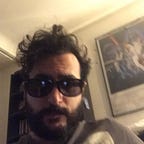WRITE A COMIC BOOK
Screenwriters need to expand their toolbox
Are you a fan of comics? Chances are you are not, Comic-book movies are at an all-time high, but paradoxically, comic-book sales are less than stellar, which is a shame because comics and comic-book writing could teach us a lot about the craft of storytelling.
Historically, there are two ways of writing a comic and both of them are EXCELLENT practice for storytellers, and in particular, for screenwriters.
These two methods are well known inside the comic-book community, and I think they are well worth importing into the screenwriting one. Meet:
The MARVEL Method
For better or for worst, screenwriting has a very standardized format. No matter the story, the company, or the country, everyone uses the same set of rules imported into their word document, or they directly use tools like Final Draft or WriterDuet that automatically formats their scripts.
Comics don’t have that standard, which means that when the medium was still in its infancy, writers would pretty much write the scripts however they wanted, and In Marvel, a particular style of scriptwriting emerged.
Developed by Stan Lee, who was writing up to 50 comics a month, the MARVEL Method consists of outlining the beats of the story and leaving the rest to the artist. Pure plot, nothing more. The writer would just come up with what keeps the story moving, the rest of the storytelling would fall on artist and dialog writers.
This style — or method — has important advantages and disadvantages.
Advantages: The writer can focus entirely on the plot, making it as stable and engaging as possible, while the artist has more freedom to express himself within the page.
Disadvantages: Loss of control, giving that much space to the artist can be detrimental to the story; after all, they will control the pace of the plot within each page.
What can Screenwriters learn from this method: Before starting a script, all writers should do complete outlines of the story. That is the skeleton of the screenplay, the foundation. Writing a couple of comics with the “Marvel Method” will help you develop your plotting muscle. In no time, you will be able to move your story forward with ease while hitting those critical plot points.
THE FULL SCRIPT METHOD
As the comic book medium developed and more writers entered the craft, so did the scripts. After all, now the writer could spend more time with each story, so instead of delivering 50 comics a month, a prolific writer would provide 2 or 3 at most.
As its name indicates, these scripts describe in detail what happens in each comic. That means information of the layout of the page, description, and action for what happens panel to panel, as well as dialog and SFX.
Each writer can go into as much detail as he’d like, Alan Moore scripts are legendary specific and utterly massive. Some writers do quick sketches of what they think a panel should look like, others mix and mash the Marvel Method with the Full Script Method depending on the requirements at the time.
Of course, this style has significant advantages and disadvantages too.
Advantages: Complete control of the story and everything that happens in it. A good writer can control the flow and gaze of the readers describing a good page layout. With this method not only the plot will be completely his, but the dialog, and the characterization of each character too. In this style, the writer is almost the full author.
Disadvantages: Artists are excellent visual storytellers and giving them an exhaustive script might limit their capacity to add to the story, which means the comic might lose the visual appeal, and that’s a capital sin for any visual storytelling medium.
What can Screenwriters learn from this method: VISUAL STORYTELLING. Describing what should be drawn in each panel will make you exercise an essential muscle.
Movies are images, and comic books are much more than just colored storyboards. Good screenwriters should know how to give information to the audience through visual means.
Writing what the reader sees and what happens in each panel for a 22-page comic, will teach you what is essential in the visual description, and what can be left to the other creators of the story.
In short, write a comic.
